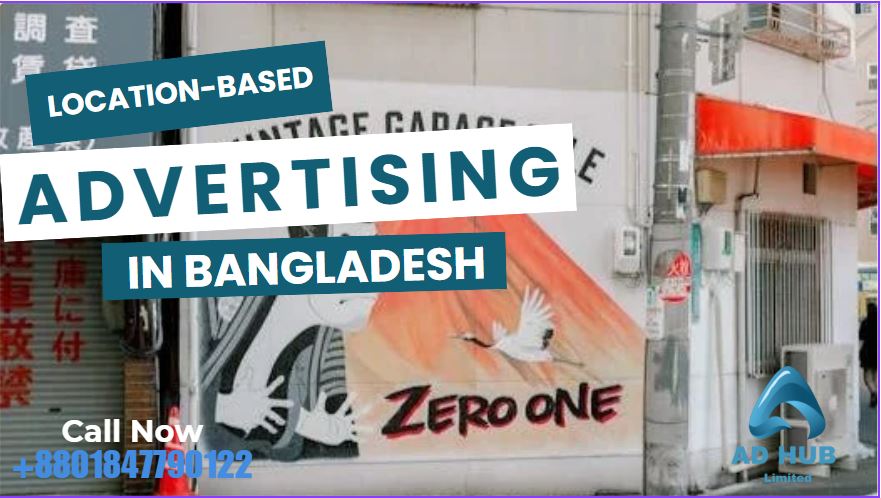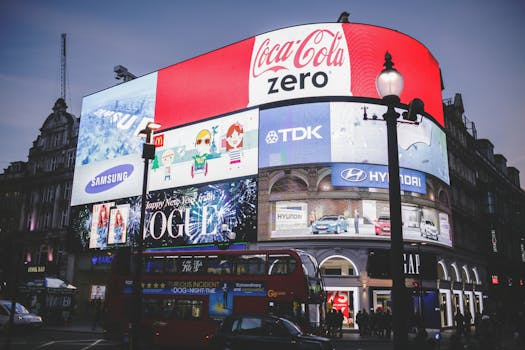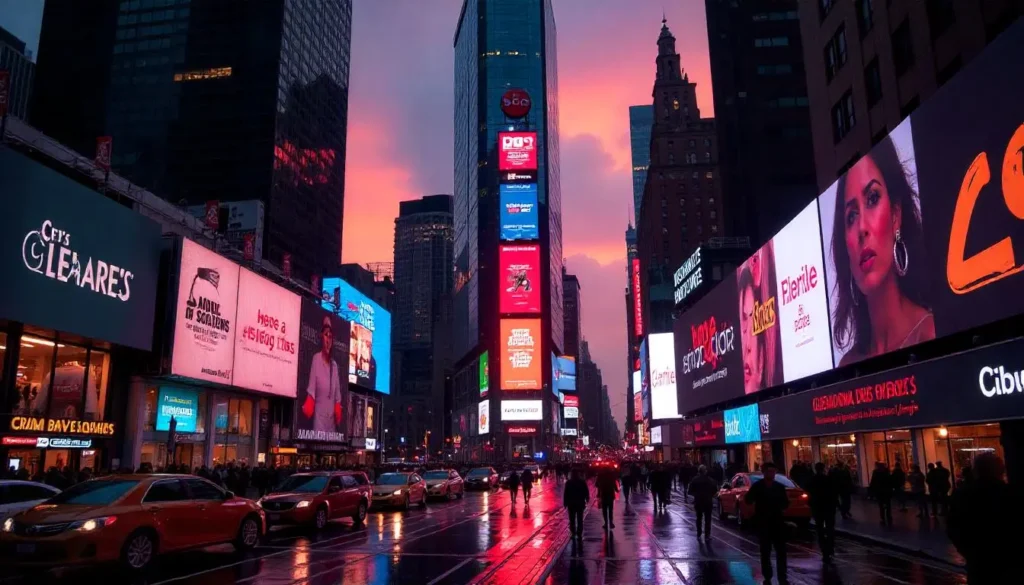
Discover Location-Based Advertising in Bangladesh
At Ad Hub Bangladesh, we see location-based advertising as one of the most powerful tools for reaching the right audience—at the right place and time. In today’s hyper-connected world, especially in Bangladesh where mobile phones dominate digital access, brands have a golden opportunity to engage consumers through targeted, location-aware campaigns.
From a small boutique in Dhaka running a weekend flash sale to a retail chain in Chattogram pushing promotions during festival seasons, businesses across the country are embracing this approach. And for good reason. It works.
📍 Here’s how: By using GPS, WiFi signals, mobile data, and geofencing, we can pinpoint where a user is—whether they’re strolling through a shopping mall, riding the metro, or attending a cricket match. This allows Ad Hub Bangladesh to craft highly relevant messages that trigger real-time actions, driving engagement and building stronger brand recall.
📈 According to SEKEL Tech, location-based marketing can increase foot traffic to retail stores by 12.5% year-over-year. That’s a clear signal—brands that tap into hyperlocal insights are poised to grow faster.
Why It Works in Bangladesh
- 📱 Mobile-first population
- 🌐 High digital content consumption
- 🛍️ Region-specific promotions perform better
- 🎯 Culturally relevant, event-driven targeting
And while we help you unlock this potential, Ad Hub Bangladesh also prioritizes user privacy, ensuring all location data is handled with transparency and care.
📍 Want to launch smarter, location-powered campaigns in Bangladesh?
Let Ad Hub Bangladesh show you how to map your success, one audience at a time. Talk to our team today.
Embrace a mobile-first environment
In Bangladesh, more than 190 million mobile connections connect people across towns, villages, and cities (Implevista). That number is rising as data packages become cheaper and smartphones gain popularity. Telecommunication giants like Grameenphone, Robi, and Banglalink make it easier to check social media, stream videos, and browse e-commerce platforms all day long. For us, that means we have a powerful avenue for delivering ads relevant to a user’s immediate surroundings. Whether viewers are commuting to work, catching up on social media at a café, or heading to class, they are within arm’s reach of notifications and targeted messages.
Because most Bangladeshis go online primarily via mobile phones, location-based ads typically see higher engagement than generic mass campaigns. This is especially relevant for younger demographics. Nearly half the country is under 35, so they tend to be comfortable with apps like TikTok, Facebook, and YouTube (Implevista). Facebook alone boasted around 52.9 million users in 2024, reflecting its continued sway in daily life (NGITAL). With location-based targeting, we can customize Facebook ads to speak to local festivals, citywide events, or even the typical morning hustle in Dhaka.
But Facebook is only one piece of the puzzle. YouTube’s 33 million users in Bangladesh provide a second giant platform to captivate people with videos that tie directly to local culture (NGITAL). Posting targeted ads before or during a video allows us to connect with a user’s immediate setting. Let’s say you want to announce a limited-time deal at your shop in Sylhet. Using location filters in your YouTube campaign means you can speak directly to viewers in or around Sylhet—no wasted reach.
Below is a quick glance at three popular mobile-focused channels in Bangladesh and how location-based tactics apply:
| Platform | User Base (Approx.) | Location Targeting Options |
| 52.9 million | Pinpoint by city, neighborhood, or radius around a specific area | |
| YouTube | 33 million | Align text and video ads with user viewing locations |
| 28 million | Send direct messages, personalized offers, and location-tagged chat |
Our data suggests that each platform benefits from location-based campaigns if done tactically. Good news—this is easier than it sounds. You can create geofenced or city-specific ads without needing to be a technical guru. It all comes down to deciding who, when, and where you want to reach.
Explore core tactics for location targeting
Location-driven advertising isn’t limited to city-based filters on Facebook or suggested ads during a YouTube video. It embraces a set of methods that provide nuanced strategies to engage local audiences. Below are some common approaches:
- Geofencing
This method draws a virtual boundary around a particular area—such as a busy road or a popular shopping mall—so that anyone entering or leaving that space will receive customized messages. For instance, a restaurant might give a lunch discount to passersby during midday. Geofencing is especially powerful in densely populated urban centers. - Beaconing
Beacon devices use Bluetooth or WiFi to detect customers in close proximity to a store or kiosk. In exchange, visitors get hyper-personalized alerts like product details, in-store navigation, or loyalty rewards. Beaconing can drive foot traffic and capture the attention of on-the-go consumers, helping them discover sales right when they are most receptive. - Geo-conquesting
This approach locates people near (or inside) a competitor’s area, then presents a compelling alternative. Let’s say your new café wants to catch coffee drinkers who typically go to the rival café down the street. By layering geo-conquesting on top of location-based data, you can encourage them to switch with a free pastry offer. - Mobile targeting
Beyond geofencing, you can set up location-based ads tied to specific times of day or relevant local events, ensuring your message arrives when people in that location are most likely to respond.
Together, these tactics create a sophisticated toolkit for brand outreach. Let’s say we are running a multi-channel push in Dhaka. We can blend geofencing around the city center, add beaconing in popular malls, and layer geo-conquesting to sway consumers away from competitors’ events. By uniting those pieces, we can raise brand awareness in a cohesive, data-driven way.
Understand privacy and data protections

Location-based marketing thrives on personal data—GPS coordinates, browsing patterns, or store visits. However, we must handle that data responsibly. Bangladesh has introduced security regulations under the Cyber Security Act 2023 (CA 2023), which shapes how identity information is collected and used. Although no specific e-marketing or cookie laws exist, CA 2023 does prohibit unauthorized collection and sale of “identity information,” with fines reaching Taka 5,00,000 in serious cases (DLA Piper).
The act does not precisely define what “lawful authority” means for data collection. So, we recommend obtaining explicit user consent wherever possible. This can be as simple as including a disclaimer or consent box in your mobile app or website explaining how location data is used (“We’ll send localized offers when you’re nearby”). While not mandatory under a formal set of e-marketing rules, it is best practice to build user trust.
Bangladesh also does not heavily regulate cross-border data transfers, beyond certain industry-specific policies. Banks, for instance, must get permission before sending customer data overseas, while telecommunication providers face their own restrictions. For everyday brand marketers, this means we have flexibility, but it still pays to stay transparent with your audience. If your location-based campaign funnels user data to an overseas analytics tool, consider telling users in your policy. That transparency fosters trust, and trust, in turn, leads to better engagement.
See real-world advantages in retail and beyond
One reason location-based advertising in Bangladesh is surging is its direct effect on foot traffic, brand loyalty, and conversion rates. In a country where brick-and-mortar shopping is still a vibrant experience, tying mobile ads to physical store visits can produce measurable lifts. Data from SEKEL Tech suggests that delivering relevant ads and offers based on geographic location can strengthen a brand’s entire marketing cycle (SEKEL Tech).
Here are a few scenarios where location-based strategies thrive:
- Retail promos: A clothing store in Dhaka’s Bashundhara City may want to attract on-site shoppers with a beacon message such as, “Welcome! Today only, enjoy 10% off denim.” When users are physically near that store, that ping feels highly relevant.
- Hospitality events: Hotels in Cox’s Bazar can geofence their immediate area, pushing local event invites or spa promotions to weekend travelers as they drive into the vicinity. This serves up timely offers to people mid-vacation, which can guide them to book that extra night or spa appointment.
- Urban campaigns: If you plan a neighborhood-level campaign, combining location-based ads with city sponsorships can multiply your visibility. For instance, we might pair geofencing around local soccer fields with event marketing in Bangladesh to create synergy between live sports and social media blasts.
We also see location-based advertising working well for brand-building. A business focusing on convenience or speed might highlight how quickly they deliver within a 5 km radius. This approach extends beyond retail. A corporate service in Dhaka could highlight fast document processing or immediate office visits—smart if you are trying to reach prospects who prefer local providers.
Integrate location ads into multi-channel strategies
It’s useful to remember that location-based outreach doesn’t stand alone. Combining it with other channels in Bangladesh strengthens your overall marketing push. For instance, pairing geofenced mobile ads with media advertising in Bangladesh can help you capture attention both online and offline. You might serve billboard ads near a busy street, then retarget the same potential customer’s smartphone once they step into the area.
Other synergy examples include:
- LED displays: If you run a chain of electronics stores, you might use led advertising bangladesh to showcase new gadget deals in prominent shopping zones. At the same time, push location-based coupons to passersby using mobile device signals.
- Physical events: Holding a product unveiling in Chittagong? Use digital signage and kiosk solutions during the show, and then rely on location-based ads to invite or remind folks in that same area after the event. Stored location data can also help with post-event follow-ups.
This kind of multi-pronged approach ensures that consumers see consistent messaging across digital, in-person, and mobile channels. Good news—our experience shows that the greater the consistency, the more likely a user is to recall the brand when it’s time to make a purchase decision. By thinking beyond a single platform, you build a seamless brand presence that flows naturally.
Craft a roadmap to successful campaigns
Location-based advertising thrives on a mix of precise targeting, creative messaging, and continuous optimization. We’ve outlined some best practices to guide you in Bangladesh’s evolving market:
- Define clear goals and metrics
Decide exactly what success looks like. Is it increasing foot traffic, boosting early product sales, or upselling existing clients? Each goal benefits from different metrics—footfall counters, sales data, or in-store redemption codes. - Segment your audience
A college student in Sylhet may respond differently to an offer than a middle-aged executive in Dhaka. If you have user profiles, create location segments (such as campus zones, office districts, or residential areas) and tailor your offers. - Time your messages carefully
It’s not just about where but also when you reach people. Lunchtime deals may flop if they land at 3 pm, well after hungry crowds have finished eating. Good timing plus local familiarity can turn an ordinary ad into a nudge to action. - Optimize for mobile experience
Make sure your landing pages, forms, or check-out gateways adapt to small screens. If viewers have to pinch and zoom, they will likely bounce. Keep it fast and user-friendly, especially since many Bangladeshis depend on budget-friendly phones with limited bandwidth. - Location-based personalization
Draw from local culture or seasonal festivities. At Eid, highlight special offers or gifts relevant to the holiday. During monsoon season, tailor your message to reference comfort foods or protective gear. - Comply with data best practices
Aim for transparency. Announce how you use location details in your app or site policies. Offer simple ways to opt out if the user chooses. People who trust you are more likely to remain loyal in the long run. - Test, measure, refine
Track performance data from every location-based tactic. Run A/B tests with different geofences, messages, or times of day. Use that feedback to sharpen your next campaign. This iterative cycle allows you to pinpoint which area or strategy is the most dynamic.
By weaving these steps into your planning, you can deliver well-timed, hyper-local content that resonates rather than annoys. A balanced approach—part data-driven, part creative brainstorming—tends to yield stronger engagement. Each campaign becomes a lesson in what works best for your audience.
Leverage data-driven storytelling
Beyond immediate conversions, location-based advertising opens the door to powerful audience insights. For instance, you can gather anonymized data on how often people enter specific zones, how long they stay, or what time they’re most active. This analysis can shape your store layouts, event schedules, or even new product launches.
Place-branding initiatives also benefit from this type of data storytelling. Globally, we see cases like Glasgow City Council or Vancouver’s Destination Canada bringing together mountains of data to draw visitors and investors (City Nation Place). While Bangladesh is not quite at that scale, plenty of potential exists to unify location analytics with broader economic development goals.
That synergy promotes a climate where local businesses, tourism boards, and government agencies could collaborate on location-based projects. Imagine Dhaka City Corporation sharing geofencing data with local businesses to time city events in a way that maximizes foot traffic, or a tourism bureau in Cox’s Bazar using location-based promotions to manage crowd flow along the beach. These advanced forms of collaboration can blossom once everyone recognizes how valuable location analytics can be.
Reflect on ethical and cultural nuances

Anytime we leverage users’ locations, we must remain culturally sensitive. Bangladesh is home to diverse communities with distinct traditions, languages, and preferences. Tailoring messages is great, but we should do it carefully. Avoid stereotypes or assumptions based on location alone. A campaign that refers specifically to a local habit must be informed by genuine research into that community.
Respecting user privacy is about more than following legal requirements. It’s about staying mindful of how data might be perceived. If people feel they’re being tracked or singled out, that location-based campaign can backfire. Offering value—like personalized discounts, exclusive invitations, and helpful information—makes the exchange feel fair. This balanced perspective ensures that location-based ads come across as genuinely useful instead of invasive.
Quick recap and next step
- We started by exploring how location-based advertising connects brands to real-time audiences in Bangladesh, aided by the country’s vast mobile network.
- We saw that geofencing, beaconing, and geo-conquesting each have distinct roles, from driving foot traffic to luring customers away from competitors.
- We learned how key platforms like Facebook and YouTube can fine-tune local targeting, supported by data policies under CA 2023 that guide how we collect and store user information.
- We examined how multi-channel approaches, including led advertising bangladesh and event marketing in bangladesh, multiply brand exposure.
- We explored best practices: define goals, segment your audience, observe proper timing, keep it mobile-friendly, and measure performance regularly.
Our next step is to put these insights into action. Take one of the location-based tactics from above and pilot it for a week—perhaps a simple geofence around your store or an evening-time push for your café. Monitor how many people redeem your offer, click your ad, or walk in the door. Even a small test can deliver big lessons on how to refine your approach. If you have strong results, expand. If not, tweak your radius, message, or scheduling until you find the sweet spot.
You have the means to reach local audiences in ways that are timely, personal, and effective. It’s all about selecting the right location-based method for your brand. People in Bangladesh are on the move, and your ads can move right along with them.


